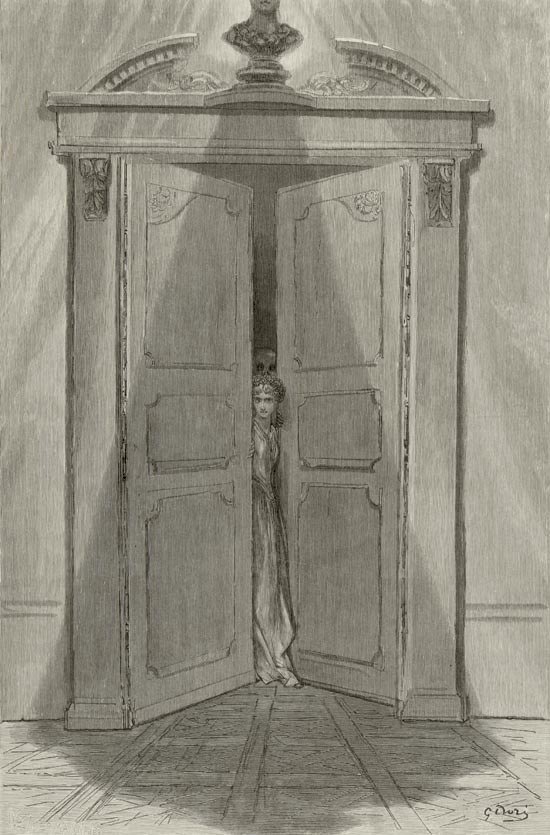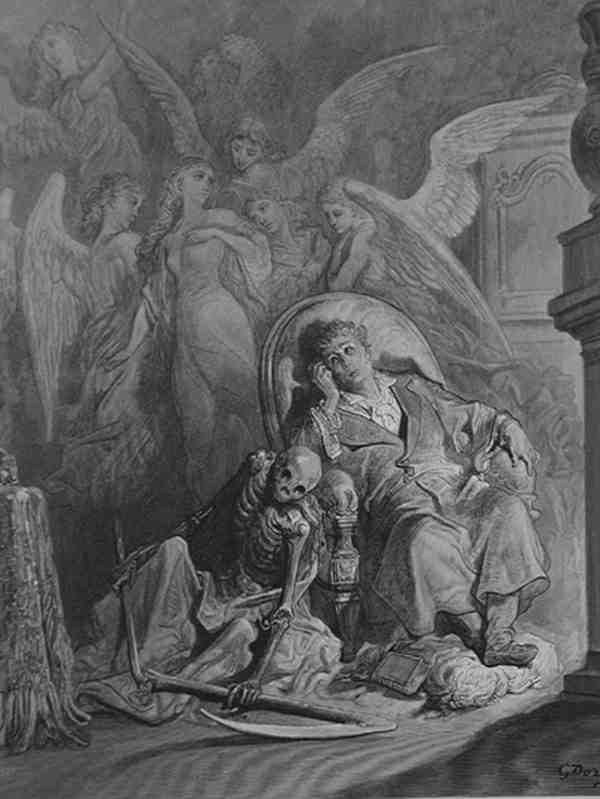

“The ludicrous heightened into the grotesque; the fearful coloured into the horrible; the witty exaggerated into the burlesque; the singular wrought out into the strange and mystical.”
Committing himself to an extreme art sometimes approaching “the very verge of bad taste,” Poe aimed to achieve celebrity by shocking the public.
“To be appreciated, you must be read,” he insisted, justifying his tactics.
There is something about his poems and tales, which is like a twilight zone of primal anxiety and endless melancholy. Instead of sentimentalised image of death, he conjures up scenes of dissolution, dismemberment, and decomposition !
“The New York Evening Mirror had printed “The Raven” in January of that year, and it was a big hit for the newspaper. It seemed as if almost everyone had read the poem about a bird who speaks only one mysterious word: “nevermore.”
Edgar Allan Poe is one of the most important writers in American history. He is most remembered for chilling stories that still terrify readers today, more than 165 years after his death. His work has influenced writers, artists, and even movie directors.
Edgar allan poe was born in Boston on January 19, 1809, the son of itinerant actors. Orphaned in 1811, he became the ward of John and Frances Allan of Richmond, accompanying them to England in 1815 and then returning in 1820 to Richmond, where he completed his early schooling.
He briefly attended the U.S. Military Academy. Court-martialed and expelled, he took refuge in Baltimore with his aunt, Maria Clemm, and there began to compose fantastic tales for newspapers and magazines; in 1835 he obtained a position in Richmond at the Southern Literary Messenger.
Perhaps already secretly wedded to his thirteen-year-old cousin, Virginia Clemm, he married her publicly in 1836. At the Messenger Poe gained notoriety by writing savage reviews, but he also raised the journal’s literary quality and enhanced both its circulation and reputation.
In 1837, however, economic hard times and alcoholic lapses cost Poe his job; he moved to New York, where he completed a novel, The Narrative of Arthur Gordon Pym, published in 1838. By then, Poe had relocated to Philadelphia, where he wrote “Ligeia” as well as “The Fall of the House of Usher” and “William Wilson.”
He also published his first book, a volume titled Tales of the Grotesque and Arabesque (1840), and later produced the first modern detective story, “The Murders in the Rue Morgue,” as well as the prize-winning cryptographic tale, “The Gold-Bug.”
In 1842 his wife suffered a hemorrhage that marked the onset of tuberculosis. Poe returned to New York in 1844 and reached the peak of his productivity, publishing such tales as “The Premature Burial” and “The Purloined Letter.”
He gained fame in 1845 with his poem “The Raven,” and that year also saw the publication of two books: Tales and The Raven and Other Poems.
Poe continued to write and to care for Virginia until her untimely death in 1847.
In his final years, he composed the sweeping, cosmological prose-poem, Eureka (1848), as well as some of his most renowned poetry, including “The Bells,” “Eldorado,” and “Annabel Lee.”
After a ruinous bout of election-day drinking, Edgar Allan Poe died in Baltimore on October 7, 1849.
The Best of Poe

Poe conjured strange scenes and haunting images in a dozen truly memorable poems that established his reputation in verse.
During his last years, Poe’s preoccupation with Virginia’s illness and subsequent death as well as his struggle for survival gave his poems a sharper urgency. “Lenore” signals his return to the death- of-a-beautiful-woman motif and builds on an early poem. Both the title and long poetic lines of the 1844 version of “Lenore” anticipate the extraordinary narrative poem composed later that year, “The Raven.“
Ah, distinctly I remember it was in the bleak December;
And each separate dying ember wrought its ghost upon the floor.
Eagerly I wished the morrow;—vainly I had sought to borrow
From my books surcease of sorrow—sorrow for the lost Lenore—
For the rare and radiant maiden whom the angels name Lenore—
Nameless here for evermore.

Something of the despair that menaced Poe can be glimpsed in the short but affecting “A Dream Within a Dream,” which concludes with the question, “Is all that we see or seem / But a dream within an dream?”
Take this kiss upon the brow!
And, in parting from you now,
Thus much let me avow:
You are not wrong who deem
That my days have been a dream;
Yet if hope has flown away
In a night, or in a day,
In a vision, or in none,
Is it therefore the less gone?
All that we see or seem
Is but a dream within a dream.
I stand amid the roar
Of a surf-tormented shore,
And I hold within my hand
Grains of the golden sand–
How few! yet how they creep
Through my fingers to the deep,
While I weep–while I weep!
O God! can I not grasp
Them with a tighter clasp?
O God! can I not save
One from the pitiless wave?
Is all that we see or seem
But a dream within a dream?

Annabel Lee
The angels, not half so happy in heaven,
Went envying her and me—
Yes!—that was the reason (as all men know,
In this kingdom by the sea)
That the wind came out of the cloud by night,
Chilling and killing my Annabel Lee.
But our love it was stronger by far than the love
Of those who were older than we—
Of many far wiser than we—
And neither the angels in heaven above,
Nor the demons down under the sea,
Can ever dissever my soul from the soul
Of the beautiful Annabel Lee:
For the moon never beams, without bringing me dreams
Of the beautiful Annabel Lee;
And the stars never rise, but I feel the bright eyes
Of the beautiful Annabel Lee;
And so, all the night-tide, I lie down by the side
Of my darling—my darling—my life and my bride,
In her sepulchre there by the sea,
In her tomb by the sounding sea.
The much cited “Annabel Lee” may also owe its inspiration to Annie Richmond, or to Virginia’s recent death, although there is reason to suspect that Poe was recalling his childhood love, Sarah Elmira Royster Shelton, by then a widow still living in Richmond. The poet’s visit there in 1848 fanned the embers of early passion; when he began courting her in 1849, he read the poem in her presence. Its poignant evocation of a fated love that outlasts death itself, compelling the speaker to “lie down” nightly beside the tomb of Annabel Lee, stands as Poe’s greatest lyric poem.
Disclaimer: All recommendations are impartial and based on user experience, with no bias to the products or the brand. The products in this post may contain affiliate links.
[…] The Best of Poe: Predicaments, Mysteries, Bereavements and Grotesqueries […]